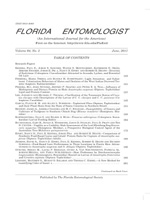Beetles are the most speciose animal group; and they are found in virtually all habitats on Earth. Methods for Catching Beetles is a comprehensive general sourcebook about where and how to collect members of this diverse group. The book makes a compelling case in its Introduction about the value of scientific collecting to taxonomy and conservation. It then goes on to provide a broad overview of collection methods in general, and also presents tailored information on collecting specific families of beetles. It is particularly suited for those new at collecting beetles, but will also benefit veteran, field-oriented coleopterists who may be switching to study different families of beetles or to collect beetles in unfamiliar habitats. The book is intended to facilitate teaching of entomology, and it could realistically serve as a supplemental text in a taxonomic survey course, a collection methods course, or a special topics class on beetles. The relatively small size of the book makes it amenable to carry in the field, but it best serves readers as a good desk reference for devising an effective collecting trip.
Individual chapters are devoted to the basics of planning a collecting trip, a survey of environments, an overview of collection methods and traps, and a summary of killing and preservation methods. An especially strong feature is the chapter titled “Where do they live ...,” which devotes nearly 100 pages on characteristics of individual beetle families—and often subfamilies and genera—and how to collect them. Information in the book is based primarily on the author's own extensive experience and that of 10 additional contributing experts, and the content is supported by a plethora of references current through year 2010 (pp. 264–303). A warm, helpful tone of the book is set by first-person language in the Introduction and at various other points, and by a smattering of personal tips and direct quotes of the main author's colleagues on collecting beetles. The book also benefits from 16 exquisite color plates, 139 black-and-white figures, and a glossary.
Catching Beetles is strictly a survey of qualitative methods for catching beetles. Hence, it lacks content on quantitatively assessing catches by calculating statistics and indices, analysis and comparison of collection methods and catches over time and among places, or any discussion of topics such as absolute versus relative sampling methods.
The book has a few shortcomings such as illogical subject organization. For instance, a section titled “Traps” (pp. 130–149) discusses general concepts (e.g. active vs. passive trapping) and several specific types of traps. However, some types of traps are described and discussed earlier in the book, e.g. bottle traps (pp. 70–71), light traps (pp. 89–95), and traps for xylophagous beetles (pp. 101–105). Another subsection titled “CARCATCHER” describes the design and use of vehicle-mounted traps, but it is inexplicably inserted about midway in the chapter on Environments. A chapter on “Killing Storing, Preserving and Rearing” contains no information on rearing, but tips on rearing beetles are given earlier in the book (e.g. rearing larvae in wood, pp. 106–108). More information could have been presented about collecting stored-product beetles, and an index would have been useful.
Better placement and use of definitions is often needed, particularly with regard to environments. For instance, lentic and lotic habitats are discussed one page before being defined, and then their individual definitions are quirkily repeated one and three pages later, respectively. In another instance under “Lakes and Ponds,” several definitions are presented for pond, but lake is never defined. Moreover, no definitions of any of these terms appear in the glossary.
Stylistic flaws and deficient English-language editing reduce the book's readability. Small font also diminishes readability of the section on beetle families, and font size is inconsistent in a few sections. Text within a few figures is indecipherable.
References are beset by formatting errors, inconsistencies, and miswordings. Mistakes often occur in alphabetical and chronological sequencing of references. Several times references are alphabetized by an author's first rather than last name, although these references are often cited that way in the text. Wikipedia and other websites are referenced authoritatively a few times instead of relying on original references to support some points.
Nonetheless, the book's strengths far outweigh its shortcomings. It will prove a thorough, useful resource to inform readers and aid them in devising study methods to enhance knowledge of the Coleoptera.





